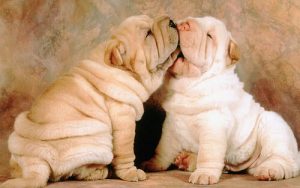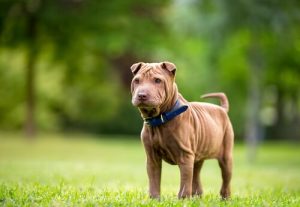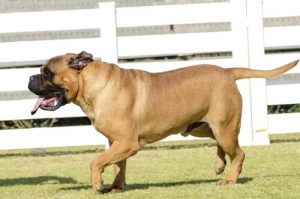Wrinkly Dog Breeds

No sooner have you seen them, then you’ve fallen in love with the folds on their face and body. Wrinkly dogs are becoming more and more popular all over the world because of their friendliness and beauty. In this article we’ll tell you about these wrinkly dog breeds!
What are the wrinkly dog breeds?
Researchers have tried for a long time to answer a question: “Why do these wrinkly dogs exist?” Even after analysing their particular skin characteristics, they can’t find a reason why these dogs’ skin isn’t “tight”.

In the case of the Shar Pei, it’s because of a hereditary condition called Cutaneous Mucinosis. But for now, nothing more is known about the other breeds. What we can guarantee though, is that as soon as you see one they’ll steal your heart. You’ll want to take them straight home! The examples of wrinkly dog breeds are:
1. Neapolitan Mastiff
This is a very large Molosser-type dog from the Dogo family. It’s believed to date back to the year 300 BC and be descended from the Tibetan Mastiff. The Greeks introduced it to the Romans, who created their own animal which was used in circus fighting.
The Neapolitan Mastiff is a solid, stocky dog with a large heavy head. Although it looks dangerous, it isn’t at all. A staunch defender of the home and family, it’s always vigilant and attentive. It’s very loyal, assured, intelligent, majestic, and not at all aggressive. It’s very important to train them from a puppy. They can suffer from hip displacement and need to be fed a kilo of food every day.
2. British Bulldog
Otherwise known simply as the Bulldog, this is another wrinkly dog on the list. Originally from the UK, it was used for fighting during the 17th Century and is one of the country’s symbols. With its chubby appearance and box-like body, this breed was used to create other breeds such as the Boxer, the Bull Mastiff, and the Bull Terrier. It has a flattened nose, is very strong, and can weigh up to 22 kg (adult males). Its tail is naturally short and curly.
If you have a British Bulldog, you need to be careful. They’re very prone to heatstroke. They also suffer from Brachycephalic Syndrome, which makes it difficult for them to breathe. They can also become obese if they don’t exercise.
3. Pug
This breed originates from China but became popular in the UK. This small molosser-type dog has a large head in comparison to its body, straight legs, and a curly tail. The “accepted” colours are tawny, a silver colour, or apricot with a black face.
This animal needs to be socialised from an early age and gets on well with large dogs. It’s very playful, active, and somewhat suspicious of strangers. Although it’s not really a guard dog, it is at least alert to danger. You need to be very careful with their eyes. Because they’re so bulging, they can graze against household objects. Their wrinkles accumulate secretions and moisture which causes infections and a bad smell.
4. Bull Mastiff
This breed originates from England and is the result of a cross between a Bulldog and an English Mastiff. The first examples date from the 19th Century and it was used to catch poachers because of its powerful jaws. They’re very large, with a boxy head, dark eyes, and tawny-reddish fur. They’re good guard dogs, active, don’t bark much, and are great to have at home. They can adapt to any kind of home.

5. Shar Pei
When you think about wrinkly dogs, this breed comes to mind straight away. The folds are all over its body! Originally from China, this animal appeared for the first time in the year 206 BC. It was also the symbol of the Han Dynasty. Shar Pei means “sand skin”, due to its colour.
They were used as guard dogs for tombs, defense dogs, fighting dogs, but these days they’re pets. They almost disappeared during the communist regime, as pets were symbols of the middle-classes and a waste of food. They’re peaceful, stable, independent, and loyal to their master. They play a little like cats by swiping their paws and can be quite mischievous as puppies.
This text is provided for informational purposes only and does not replace consultation with a professional. If in doubt, consult your specialist.